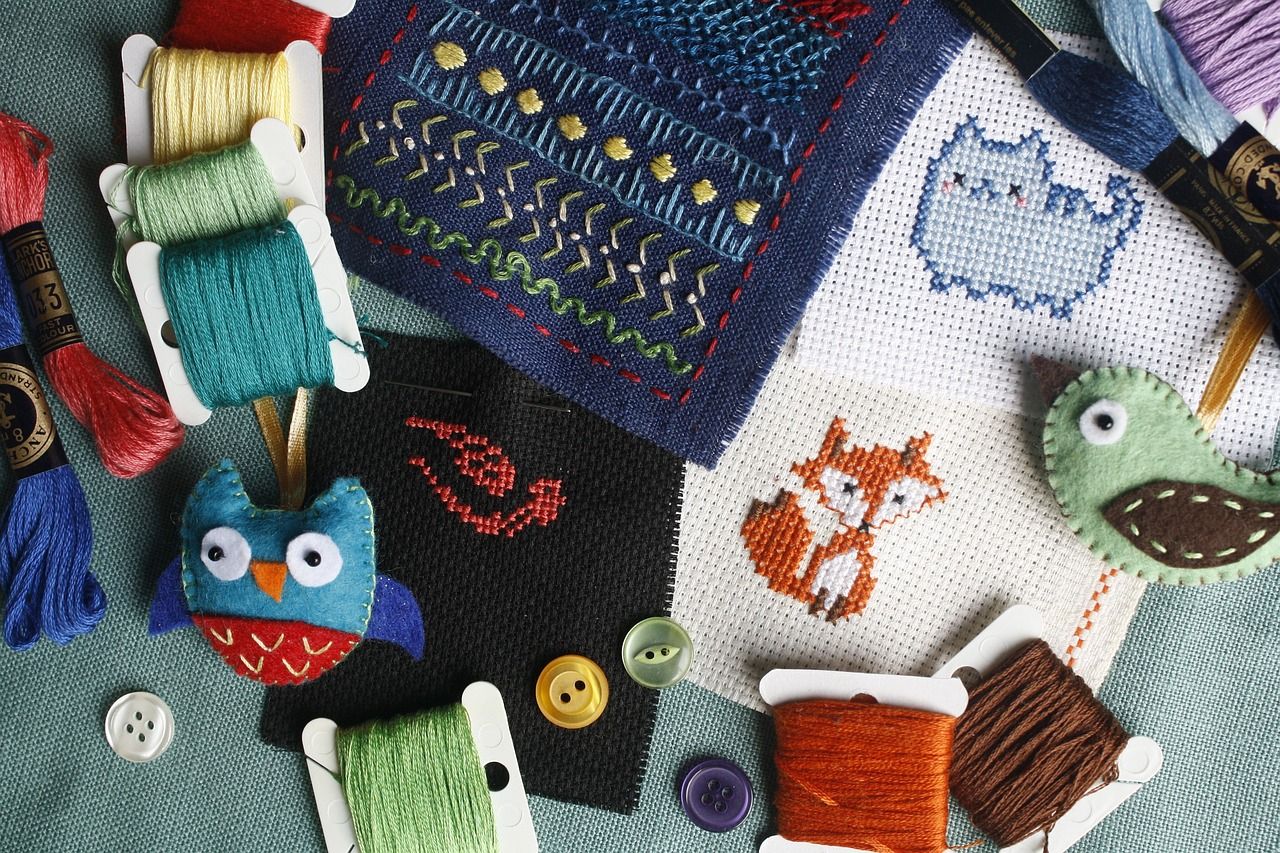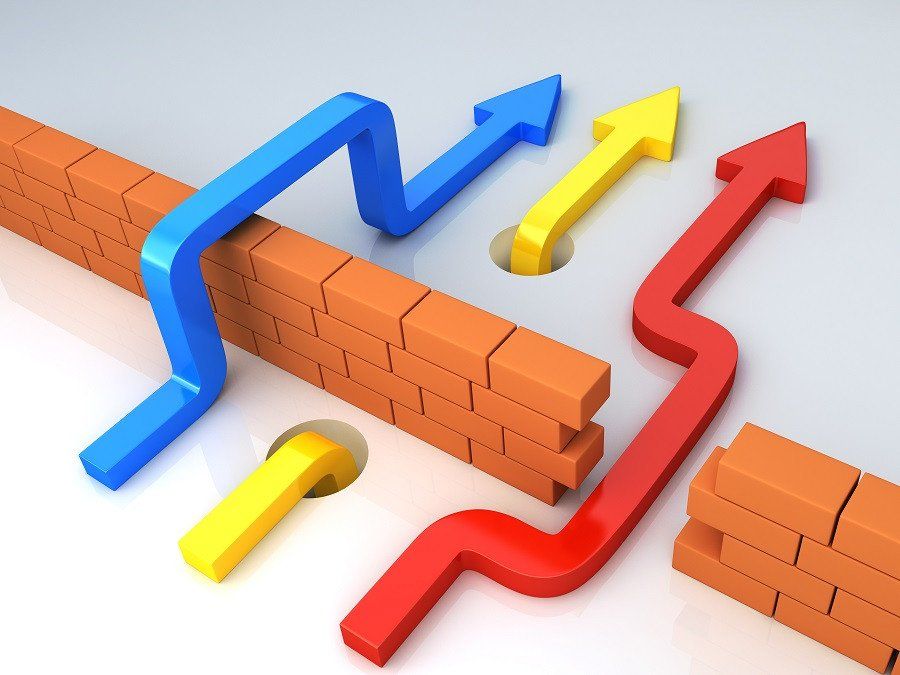Embroidery vs. Printing: Making The Right Choice For Your Brand

Photo by Anita Smith @ Pixabay
Out in the marketing world, the way you present your brand can make a huge difference. This is particularly true for brand apparel, a vital element in building brand recognition. But with growing environmental concerns, how can branding both enhance your image and protect the planet?
Read more: Leading with Purpose in the Era of Sustainability

The Climate Change 2023: Synthesis Report reveals that two centuries of human activities have resulted in a notable increase in global temperatures, leading to disruptive weather patterns worldwide. In light of this, businesses must prioritise eco-friendly branding practices.
This article will help you weigh embroidery against printing, guiding you towards a choice that's good for your brand and the environment.
Embroidery
Embroidery, whether by hand or machine, allows you to transform fabric into timeless designs using needle and thread. Unlike some printing techniques that use potentially harmful inks or chemicals, embroidery stands out as a sustainable choice.
Beyond its eco-friendly benefits, it also elevates your brand's visibility and adds a touch of elegance to each garment.
So, why go for embroidery?
- Durability: Embroidered designs tend to last longer, resisting wear and tear even after numerous washes.
- Premium feel: Embroidery gives a three-dimensional texture, often perceived as high-end and professional. This tactile quality can elevate the perceived value of the apparel.
- Versatility: From corporate polos to trendy caps, embroidery fits seamlessly on various apparel.
- Personalisation: Embroidery allows for personalised touches, making each piece unique. Whether it's a name, title, or a special date, embroidery can capture these details with precision.
- Tactile engagement: The raised nature of embroidery engages the sense of touch, creating a memorable interaction. For brands aiming for a multi-sensory experience, embroidery offers that tactile connection. Brands such as Norfolk Florist could elevate their customer experience by using embroidered cards or accents, marrying the tactile charm of both the bouquet and branding.
Supplementary reading: Why Should I Care For The Environment?

However, it's not all rosy. Embroidery has its limitations too.
Limitations Of Embroidery
Here are some of the cons:
- Design restrictions: Embroidery may struggle with highly intricate designs or fine details, potentially simplifying the original vision. If your brand's got complex logos or patterns, you might need to compromise on certain elements.
- Initial costs: The upfront investment for embroidery, especially for smaller batches, can be higher compared to other branding methods. This could pose a challenge for start-ups or businesses with tight budget constraints.
- Material limitations: Not all fabrics are suitable for embroidery. Delicate or very thin materials might get puckered or distorted during the process.
- Time consumption: Embroidery can be time-consuming, especially for designs with a lot of detail or large batch orders. This longer production time might not be ideal for businesses needing a quick turnaround or those with urgent requirements.
Despite its limitations, global brands like Lacoste and Ralph Lauren champion embroidery as a branding staple. If it aligns with your brand, explore Tee Junction's personalised embroidery or similar options for best results.
Printing
Apparel printing dates back to the Song Dynasty in China, which spanned from 960 to 1279 AD. This ancient method involved using silk as a medium, making it one of the earliest instances of textile printing.
Suffice to say, technology has significantly evolved. The printing alternatives present today allow for the production of vibrant and detailed designs which make printing another popular staple for many brands.
Take a listen to this: ESG's Powerful Role in Your Business
Here's why:
- Design flexibility: Printing allows for intricate patterns and a broader colour palette. This means brands can experiment with vibrant and detailed visuals without limitations.
- Cost-effective: Especially for bulk orders, printing can be more wallet-friendly. This makes it a preferred choice for large-scale promotional campaigns or events.
- Large designs: Ideal for full-shirt graphics or expansive designs. Printing can cover larger areas without compromising on clarity or detail.
- Quick turnaround: Printing processes, especially digital ones, can be faster than embroidery. This is particularly beneficial for businesses with tight deadlines or last-minute requirements.
- Variety of finishes: Printing offers different finishes like matte, glossy, or even metallic. Brands can choose a finish that aligns with their aesthetic, adding an extra layer of customisation.

While printing offers many benefits, it also has its drawbacks.
Limitations Of Printing
Here are some of the disadvantages:
- Fading designs: While printing can produce vibrant designs, they might fade over time, especially with frequent washing. This can lead to a worn-out appearance quicker than you might anticipate.
- Fabric feel: Some printing methods, particularly those that lay thick ink, can make the fabric feel heavy or rubbery. This can affect the comfort level, especially in warmer climates.
- Ink limitations: The range of colours and gradients achievable in a design can sometimes be restricted by the printing method. Not all techniques can accurately reproduce every shade or transition, potentially affecting the final look of the apparel.
- Environmental concerns: Certain printing techniques, especially older ones, might use chemicals that aren't eco-friendly. However, there are more sustainable methods available today, like water-based inks and digital printing that prioritise environmental safety. Some printers, such as the Prestige DTF desktop printer, have adapted to these concerns by employing advanced filtration systems and eco-conscious ink formulas, which help minimise the ecological footprint of print production.
These are some of the cons that come with printing as a choice for your brand.
Making The Right Choice
When it comes to choosing the right method between printing and embroidery, consider the following factors:
- Purpose
Is it a formal uniform or a promotional tee for an event? For formal settings where a polished and lasting impression is crucial, embroidery might be the preferred choice. For short-term events or promotional activities where cost-effectiveness and versatility are key, printing could be more suitable.
Explore: Sustainability Begins With Self-Awareness
- Budget
While embroidery might be pricier, it offers longevity. Printing, although cheaper, might require replacements sooner. It's essential to weigh the long-term costs against the initial investment.
- Design Complexity
A detailed city skyline might be better printed, while a simple brand logo could be embroidered. The intricacy and detail of your design can dictate the best method for clarity and representation.
- Material Type
Different fabrics have varying reactions to embroidery and printing. Consider the material of your apparel; for instance, a delicate silk might not be best suited for heavy embroidery.
- Turnaround Time
If you're on a tight schedule, printing, especially digital, might offer quicker results. Embroidery, being a more intricate process, could take longer, especially for detailed designs.
- Sustainability Goals
If your brand prioritises eco-friendly practices, you might want to opt for sustainable printing methods or organic threads for embroidery. Both methods have green alternatives, but they might come at a premium.

Closing Thoughts
The embroidery vs. printing debate isn't about which method is superior, but rather which one aligns with your brand's ethos.
Whether you opt for the timeless charm of embroidery or the vibrant versatility of printing, the key is to stay true to your brand's identity and environmental protection. Remember, your branded apparel is often the first impression you make – ensure it's a lasting one.
Be sure to check out the media below:
Leaderonomics.com is an advertisement-free website. Your continuous support and trust in us allow us to curate, deliver and upkeep the maintenance of our website. When you support us, you enable millions to continue reading for free on our website. Will you give it today? Click here to support us.
Business
Tags: Abundance Mindset, Alignment & Clarity, Sustainability, Business Management, Consultant Corner
Alexandra Bennett is a seasoned marketing and branding expert who merges creativity with eco-consciousness in her work. With experience spanning startups to global brands, she champions sustainable practices in branding. Outside of writing, Alexandra advocates for green business strategies and sustainable fashion trends.







